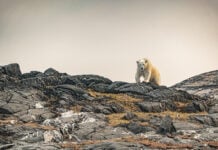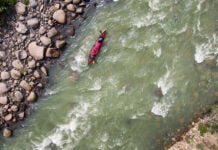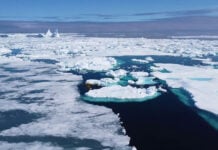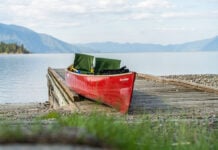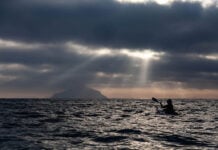We haven’t been on the river two hours and things are already borderline unmanageable. With the level at a raging 20,000 cfs, eddies have disappeared and the rapids flow one straight into the next. Austin Rathman, my good friend and sole partner in this adventure, and I somehow make it to camp one, over-adrenalized but safe for the time being. We pitch our tent just as torrential rains begin that will dump through the night.
The next morning we face a tough decision: Continue downstream on one of the continent’s hardest rivers at a level that is already too high and surely rising fast, or attempt a three-day hike out through northern Canada’s remote, grizzly-infested wilderness, where we may get lost, frozen or eaten.
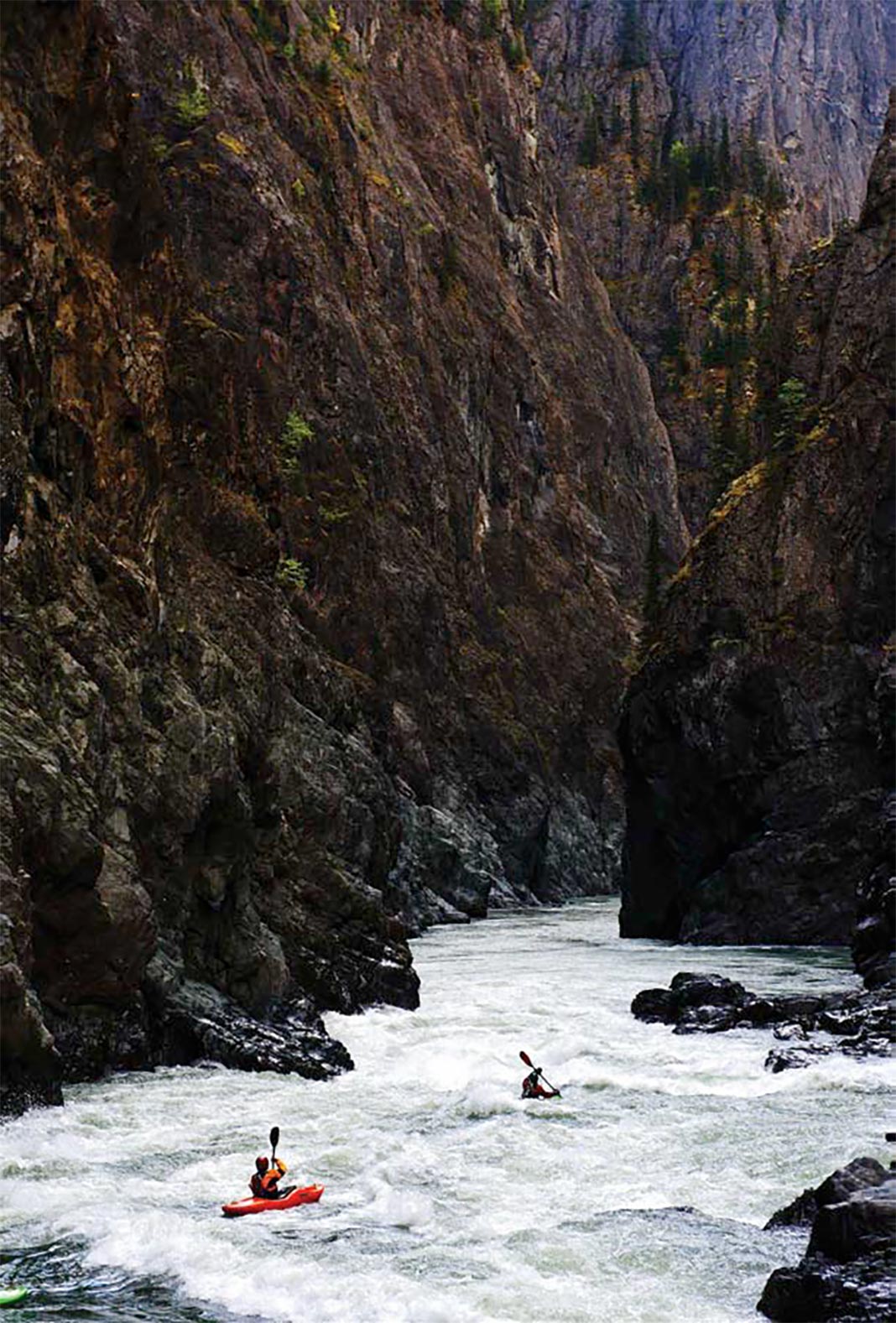
50% success rate
When I started kayaking and first heard about the Grand Canyon of the Stikine, considered by many the Everest of rivers, my imagination ran as wild as the class V rapids I made my goal to one day challenge. I became captivated—friends and family would say obsessed—with the river. I learned about every trip down the canyon.
Rob Lesser led the first team into the gorge in 1981, running most of the river at a very high level but pulling out short of a complete descent. Four years later, Lesser returned with a smaller team and helicopter support to realize the descent. In 1990, Lesser, Tom Shibig and Doug Ammons made the first self-supported descent, redefining expedition kayaking. Then, in 1992, Ammons completed a daring solo run, a feat often compared in paddling circles to Reinhold Messner’s solo of Everest.
Thirty years and over 30 expeditions on, Stikine trips still face only about a 50 percent success rate. Many crews have been forced to climb out of the gorge, sometimes in the most dramatic manner. In 1989, a barefoot Bob McDougall free climbed hundreds of feet up the vertical walls above Entrance Falls after nearly drowning in the rapids below.
These stories gripped me. I studied topo maps of the area and berated friends with tales of a canyon so deep that almost no sun reaches the bottom. A canyon where the only way through is to survive 100 kilometers of some of the most treacherous, most remote whitewater on earth.
As I grew better and more experienced, the trip migrated from distant fantasy to real possibility. After three years gaining experience in multi-day expedition boating, I thought I was ready.
A lesson on the raw power of the Stikine
It’s late August when Rathman and I decide to run the Stikine. We’ve been checking conditions for a trip on the Homathko River, but our research shows a fair weather window for more northern British Columbia— Stikine country. We don’t know anything about the water level—the only way to know this is to stand 100 feet above the river on the bridge at Highway 37.
Stikine veteran Scott Lindgren calls the two-day drive north on the Stewart Cassiar Highway, “The longest, loneliest, most apprehensive drive that a kayaker can face.” Rathman agrees.
He’s been here before. Almost two years ago, Rathman was part of a team that put on with too much water. The trip was a reality check, a lesson on the raw power of the Stikine. With two horrendous swims, one of them by Austin, the team abandoned any hope of a descent and made a grueling three-day hike out.
The water level at the bridge is a tough guess. We put on and float seven kilometers downstream to Entrance Falls, the first rapid of the Grand Canyon. Scouting this rapid requires us to scale the 500-foot cliffs that funnel the river into a narrow chaos of whitewater. From our aerie, we can see the house-sized boulder mid-river of which it’s said, “Five feet go, one foot no.” Squinting from this height, we aren’t sure how much is showing above water.
Not that it matters anymore. We are here and we are ready. Rathman wants to face the beast that nearly killed him. I am eager to run the river I have been gripped by for so long.
Paddling into Entrance Falls, I barely see the top of the rock we scouted. Both of us have great lines through the enormous, crashing waves and our euphoria blinds us to this last potential warning sign. By the time we realize there is way too much water in the canyon, it’s too late—any route other than downstream now seems undesirable at best.
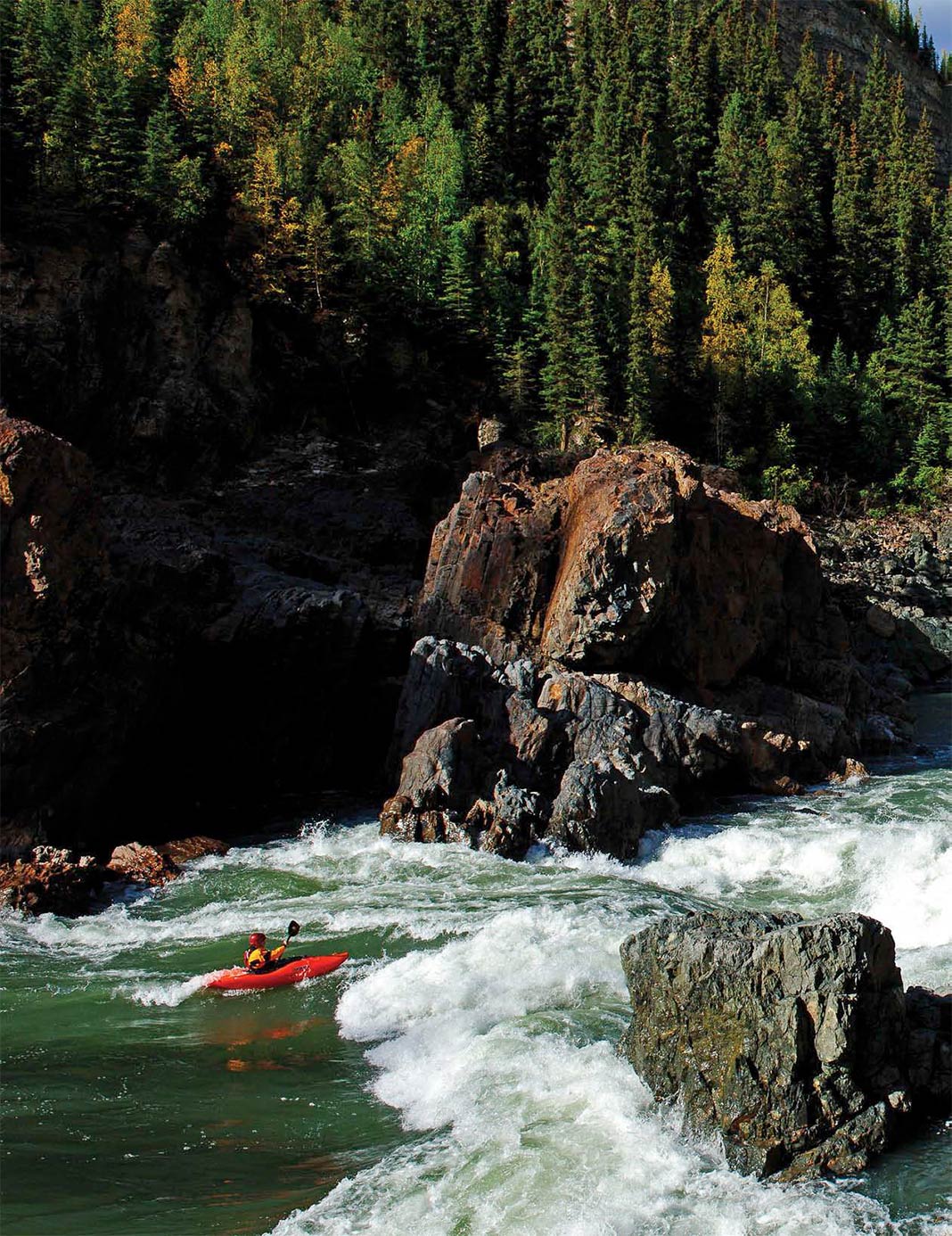
A second attempt down the Stikine
Precisely three years and 15 days later— mid-September 2010—I stood once again by the Highway 37 bridge, posing for a group shot at the infamous Stikine sign. This time the pre-trip photo would show six grinning faces—old and new friends Ric Moxon, Taylor Cavin, Ben Hawthorne, Cody Howard, the one and only Daz Clarkson and myself— in front of the words, WARNING Grand Canyon Of The Stikine Extremely Dangerous Rapids Downstream Unnavigable By All Craft.
I had spent a great deal of time contemplating whether or not I would dare a second attempt. But, like Rathman before me, it was now my turn to face my demons. As first descent team member Lars Holbeck famously said: “I should go back someday and see if it really is as scary as I remember.”
The river beneath the bridge was running at medium flow, a much more manageable 12,000 cfs. Instead of a torrent of brown mud, the water was clear and green. With fine weather the whole time, the level remained consistent for the three days we would spend in the canyon.
Even so, the whitewater was at the absolute limit of what is runnable. The Stikine tested us with massive, complex puzzles like Pass or Fail, and made certain we never forgot where we were.
Portaging around Site Z rapid, Daz fell nearly 30 feet onto jagged rocks and was lucky to emerge with only cuts and bruises. Ric’s skirt imploded when he got stuck in a monster hole, causing him to swim for his life just upstream of The Wall. Entering V-Drive, Ben was scooped up by the top wave and hurled 50 feet through the air, clearing the school bus-sized hole below.
Finally, I endured the most violent trashing of my life in The Hole That Ate Chicago. The possibility of swimming out of The Hole through the rapids below was a nightmarish scenario and a late reminder that the river was far more powerful than I ever could be.
Going battle
In the damp chill of dawn, Rathman and I agree that our best option is to head downstream. In order to beat the flood that we fear will soon catch us up, we’ll try to paddle out of the canyon today, running the normal day two and three sections in one shot.
The madness starts with the notorious Site Z ferry, which leads straight into the Day Two Narrows, the deepest and darkest reach of the canyon. We are survival boating, simply reacting to the exploding masses of water—the lines don’t exist. Scouting is impossible for most rapids and too time costly besides. We get swallowed by boils, slammed against walls and stuck in cavernous holes. The size of the features and the raw force of the water are far beyond what we imagined possible. A swim here would be fatal.
I don’t see Austin. He disappeared some time ago, and as the seconds continue to drag past, I begin to fear the worst. Should he have been ripped from his boat, there would be nothing that I could do for him. On the Stikine, you may have a team for mental support, but on the water you are on your own.
At last Rathman emerges from the bottom of the rapid; he’d been stuck in a nasty pocket eddy with an eddy fence surging several meters high. Exhausted from this ordeal, we plunge onward and are pulled blindly into Scissors.
Frequently portaged, Scissors is widely regarded as the most consequential rapid on the river due to the badly undercut rocks into which the current drives. Luckily for us, the undercuts are well below the rising water and we wash through unscathed. Later, we run V-Drive—indescribably massive at this level—and eventually make it to Tanzilla Slot, a five-foot-wide defile signaling the end of the immense canyon. We explode through the gap riding 20,000 cfs—well above maximum recommended flow for a Stikine run.
When we finish the class IV run-out below the canyon, we are brothers who have gone to battle and come out the other side as changed men. Just how changed I have yet to realize.
I don’t get in a kayak for nearly a year after we return from the Stikine. Once back in a boat, things aren’t the same. On difficult whitewater, I’m nowhere near as confident. It’s a long time before I regain my mental strengths and begin to charge as hard as I used to.
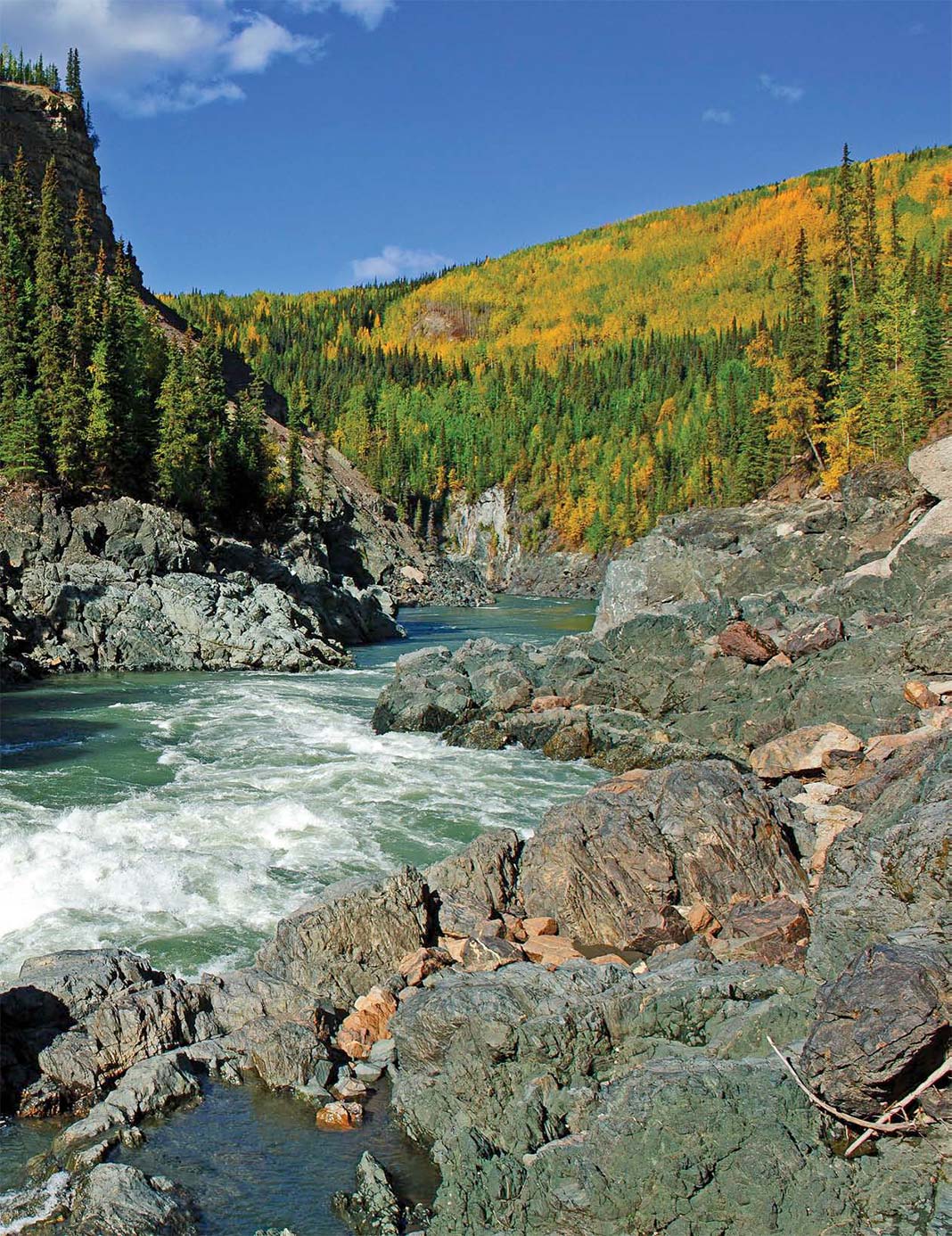
A reward from the river
Despite the occasional humbling beat-down, my second round on the Everest of Rivers was as close to a perfect trip as I could have hoped. The clear, crisp autumn air made the Stikine’s already spectacular geology a little extra remarkable. Fall colors—the brilliant gold of trembling aspens, birch and tamarack—glowed in mesmerizing patterns in the warm, low-angled light. Mountain goats skillfully climbing the steep 1,000-foot walls served as a sense of scale and put the grandeur of the place into true perspective.
After returning home, memories of amazing scenery, great campfire banter and exciting but enjoyable rapids quelled any lingering nightmares from my earlier descent.
I can’t help but wonder if the Stikine rewarded me for my willingness to face its deep gorges for a second time. It wasn’t easy to overcome three years of haunting doubt, but it certainly was worth it. In returning, I was able to fully absorb the magic of the canyon and appreciate the intimacy of the experience.
A trip down the Grand Canyon of the Stikine shows our sport in all its elegance. It is a place so astonishing that every descent represents a new chapter in the life of a soul boater. In my case, the first descent very nearly spelled the end, but the second marked the rebirth of my paddling life.
Ric Moxon charges into Wicked Wanda. On the Stikine, you scout massive holes and then you run them. No whining. | Feature photo: Maximilian Kniewasser


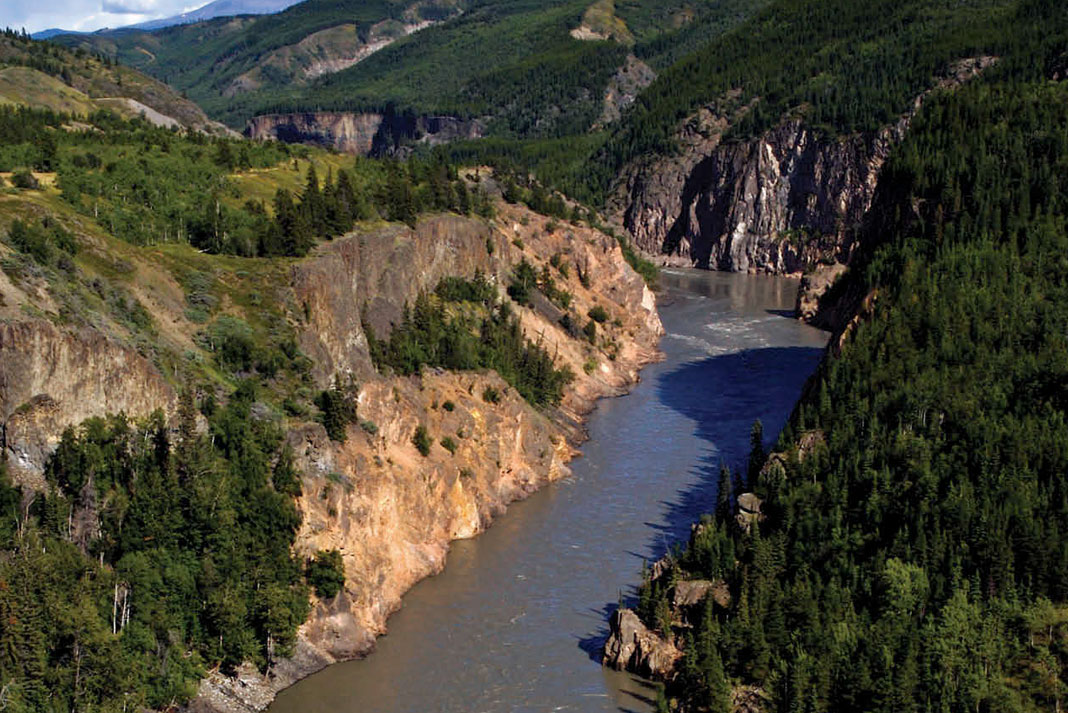
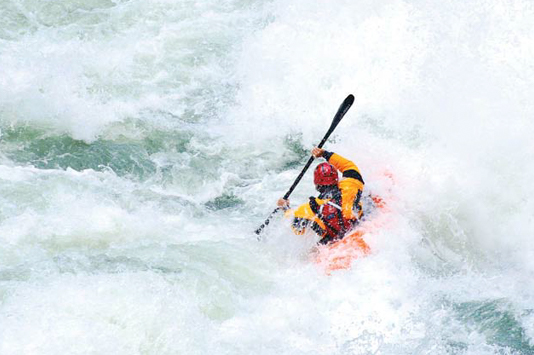
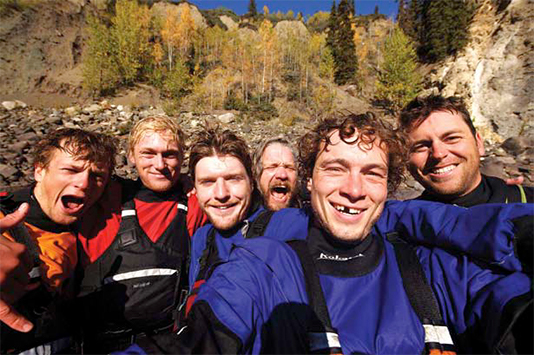
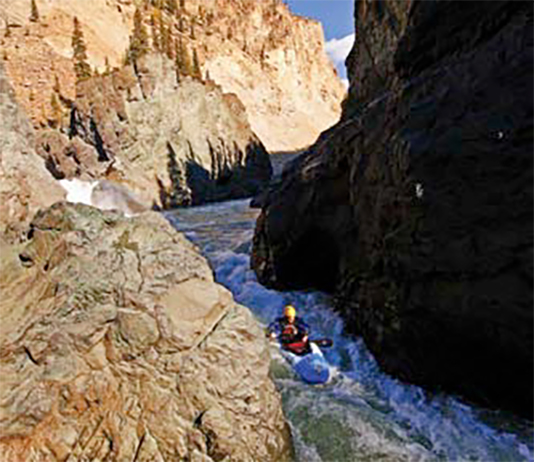
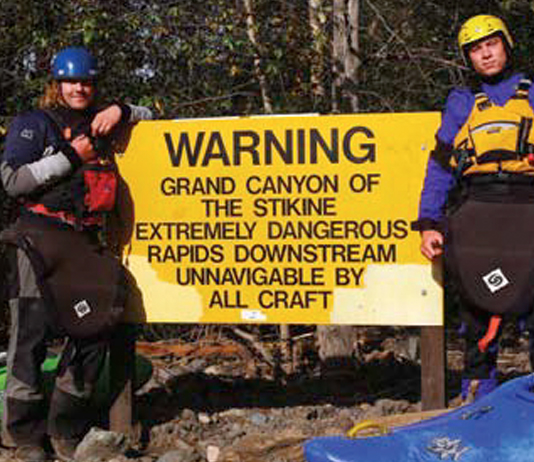
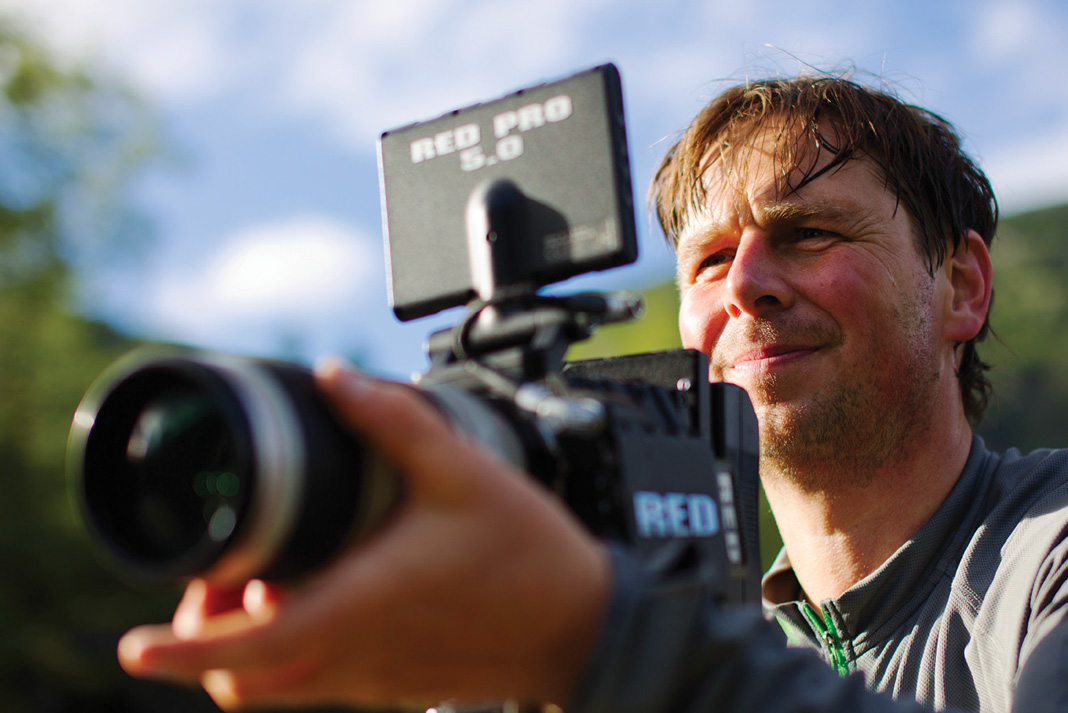
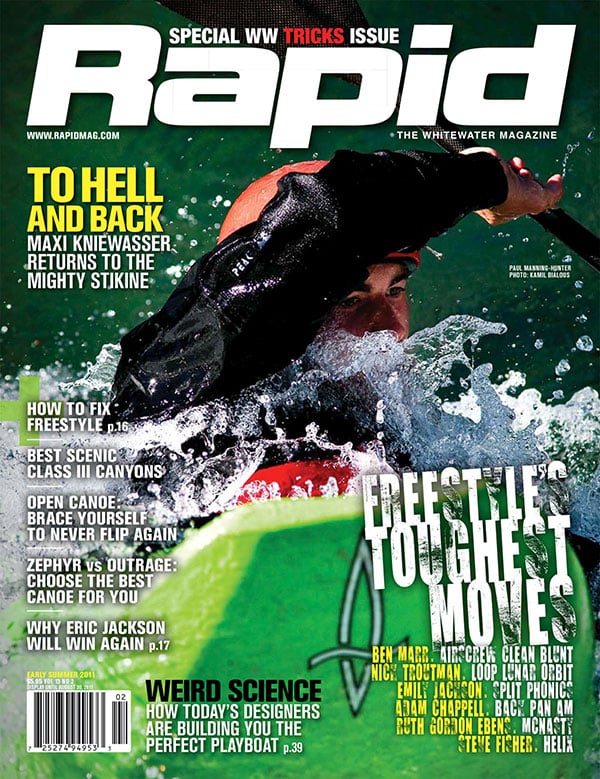 This article was first published in the Early Summer 2011 issue of Rapid Magazine.
This article was first published in the Early Summer 2011 issue of Rapid Magazine. 